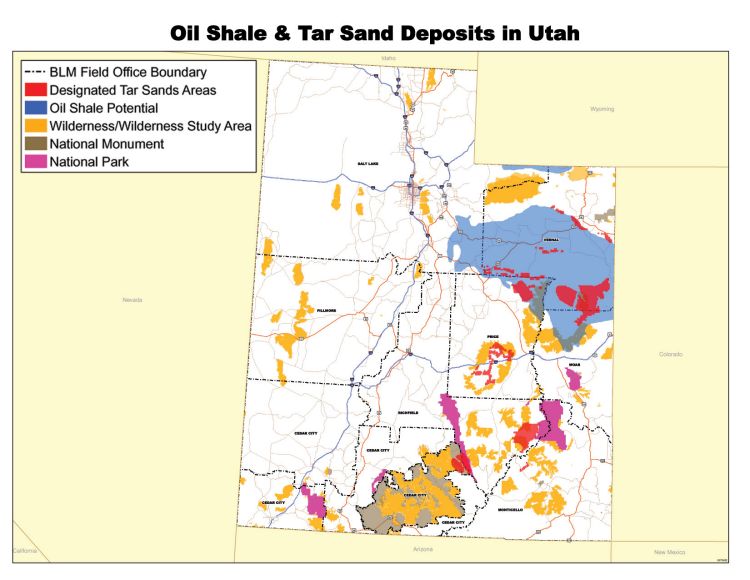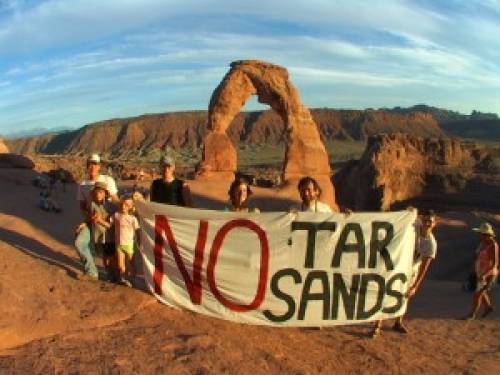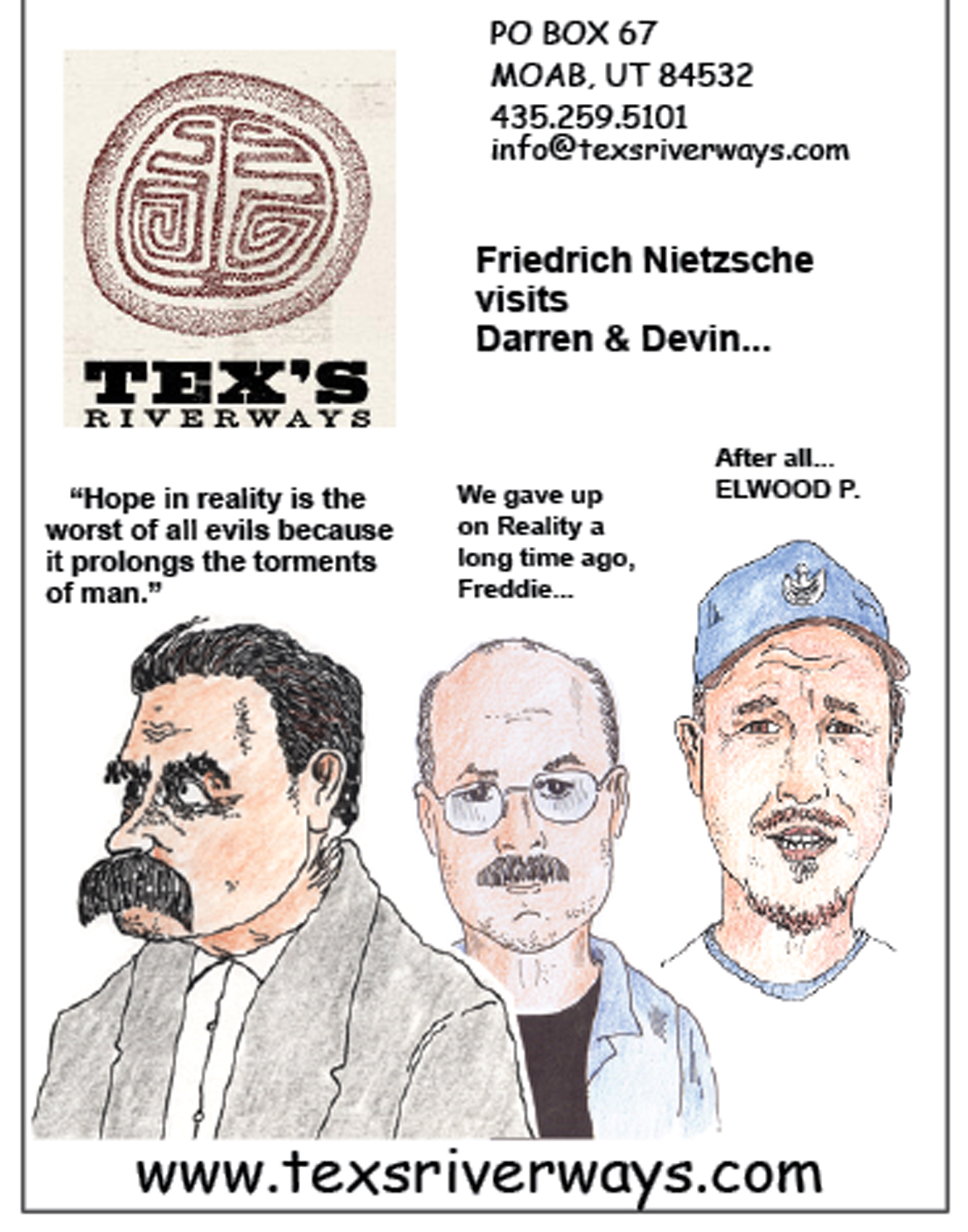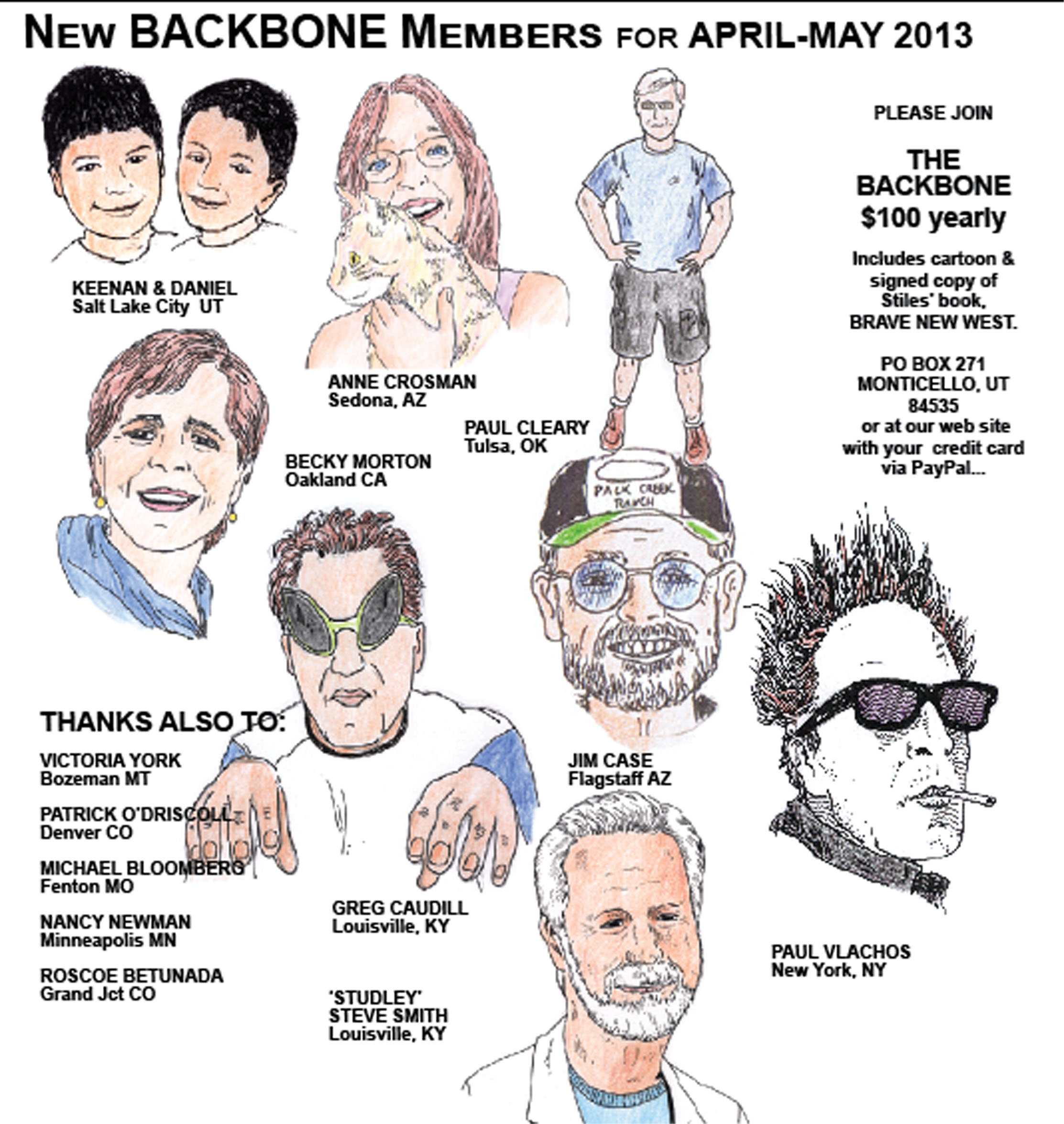Did a Land Transfer Blessed by Environmentalists Give a Boost to TAR SANDS NATION?
I seem to stumble into stories these days. I wasn’t looking for this one. But a couple weeks ago, I was perusing one of the local Moab papers and saw a press release from the BLM. It was requesting comments regarding the recently negotiated lands exchange act. In fact, it was almost five years ago, when environmentalists worked with the Congress and the BLM to pass the Utah Recreational Land Exchange Act of 2009. The legislation was supposed to be a win-win proposition.
If anyone has ever examined a land ownership map of Utah, they’d notice the odd checkerboard of sections, scattered across the Beehive State. These are State Institutional Trust lands, given to the state decades ago by the federal government as a means of compensation for federalizing so much of the rest of it. The state is mandated to exploit these lands commercially, to generate revenue for public schools.
But many of the SITLA sections are “landlocked” inside large federal parcels and SITLA has long wanted to find a way to make them more productive. BLM and the Park Service have likewise sought ways to resolve the checkerboard problem. A decade ago, the Moab office of the BLM sought a trade with SITLA. In exchange for recreational lands in southeast Utah, where tourism was already exploding, BLM would transfer mineral lands to the state.
Groups like the Grand Canyon Trust were supportive. On several occasions SITLA had proposed the sale of trust lands, even within national parks. The idea of wholesale development, in the middle of federal public lands, was especially worrisome. A decade ago, GCT’s Bill Hedden (now its Executive Director) wrote, “Real estate development of outlying parcels of trust land practically defines the undesirable aspects of sprawl. Growing communities would do far better to concentrate on filling in existing towns, but vacant parcels of trust land beckon at the fringes, with the allure of adjacent wild country as a selling point. Growth like that is destructive of community. Watersheds and views are compromised, wildlife habitat fragmented, local infrastructures overextended, and traditional ways of life eclipsed.”
Since then, environmentalists have done little to stop the sale of trust lands to real estate developers for the purpose of creating residential islands within public lands. But they did take part in the process of selecting recreational lands for transfer to BLM, fearing that areas like Utah Highway 128 along the Colorado River might become highly commercialized. They played little role, and gave little thought apparently, to what lands SITLA might receive in return. The act became law in 2009. In an August 6, 2009 press release, SUWA wrote,
“The Utah Wilderness Coalition today hailed the final passage of the Utah Recreational Land Exchange Act of 2009 (H.R. 1275). This legislation, which recently won approval in the House of Representatives (RC481 7/8/09), will enable federal government acquisition of state land parcels within the spectacular Colorado River corridor in Utah. Many of the public lands to be acquired by the Bureau of Land Management (BLM) in this exchange qualify as wilderness and will be managed to preserve their wilderness character, which is currently not possible.
“The Utah Recreational Land Exchange Act of 2009 directs the exchange of lands between the Secretary of the Interior and Utah’s State School and Institutional Trust Lands Administration (SITLA). The exchange involves approximately 46,000 acres of state lands and 36,000 acres of BLM-managed lands located within Uintah, Grand, and San Juan counties in eastern Utah.”
It was a bill, finally, that everyone could love. The Grand Canyon Trust was given much of the credit for the bill’s passage from SUWA’s executive director, Scott Groene who said: “The Grand Canyon Trust deserves enormous credit for overcoming every imaginable political obstacle to this success. It’s great for the Colorado River Canyon, but perhaps more important as the model for future exchanges.”

But back to the press release. The BLM press release asked for public comments on the specific parcels of the land for exchange between BLM and SITLA that were finally identified. According to the BLM, this swap would provide better protection for areas of critical environmental concern (ACEC) , including “Red Fork/Dry Mountain, Nine Mile Canyon, Lower Green River Canyon, Mill Creek Canyon, and in the Highway 279 Corridor/Shafer Basin/Long Canyon ACECs.”
BUT…it also includes the transfer of BLM lands to SITLA with mineral potential. In section 4.1.1.4 of the BLM Environmental Assessment (DOI BLM UT Y010 2011 0016) it states:
“Based on the assessment of mineral potential completed by the Utah Geological Survey and the BLM, in cooperation with the Department of the Interior, Office of Mineral Evaluation, the exchange would result in the following net gain or loss of mineral resources by the U.S.”
While the exchange showed a slight gain in oil and gas resources for the BLM, it also appears to transfer to SITLA a 31,429 acre parcel of lands with tar sands potential. The Zephyr contacted Lisa Bryant at the Moab BLM office. She replied:
“Of the lands that would be exchanged from BLM to the State of Utah, 31,429 acres have been determined to have potential for tar sands. The EA, on page 20, has a list of the specific parcels considered to have tar sand potential. The estimated acreage is based on mineral reports completed by the and the State of Utah Geological Survey (UGS) completed in December 2009. These reports were further assessed in coordination with the Department of the Interior, Office of Mineral Evaluation (OME) (see EA, pg 29).
“In addition to information on the ENBB, this website contains some information on the land exchange including the actual bill and the notification of the exchange, which helps explain the purpose of the exchange.”
http://www.blm.gov/ut/st/en/

When the legislation was first introduced, fears of major tar sands mines in Utah were not on anybody’s front burner. But Canada was already boasting of its successes Up North and who would NOT have expected similar exploitation in the United States if the opportunity arose? Just a year after the act became law, the Utah Division of Oil, Gas & Mining awarded the Canadian company Earth Energy Resources a permit to mine a 62-acre pit in eastern Utah, the first commercial mine of its kind in the country. And though its scale is small—it will reportedly produce 2,000 barrels of crude bitumen per day for 7 years—it could be a harbinger of things to come.
At the same time that mainstream environmentalists were congratulating themselves for the act’s passage, many more grassroots organizations were pledging to stop the tar sands project in its tracks. Just last month, the group, “Before It Starts: Keep Tar Sands and Oil Shale Mining Out of the US,” posted a warning on its facebook page:
We’re going to send a clear message from the Grand County community to an investors meeting in Calgary:
We will NOT become another sacrifice zone for the fossil fuel industry.
U.S. Oil Sands, Inc. will not be allowed to destroy our home for profit and sacrifice the climate that life depends on.
Not on our watch.
Other local organizations like Canyon Country Rising Tide, Utah Tar Sands Resistance, Deep Green Resistance Four Corners, Occupy Moab, Colorado Extraction Resistance and Living Rivers have all expressed passionate opposition to the tar sands project. This time it appears environmentalists’ goals are at odds with each other, and yet, few if any of these direct action groups has expressed an opinion with regard to the land exchange, despite the fact that their environmental cousins in the mainstream just made their task even more difficult.
In the Moab Sun News’ lead story last week, “Land exchange doubles SITLA Book Cliffs acreage available for tar sands mining,” editor Kristin Millis asked environmental leaders who support the bill for their observations. Scott Groene, executive director of SUWA, according to Millis, “pointed to the Grand Canyon Trust, a non-profit that focuses on the conservation of the Colorado Plateau, as a leader in the exchange.”
Groene said, “The Grand Canyon Trust – which lead this effort – deserves enormous credit,” according to the Sun New article. For his part, GCT executive director Bill Hedden noted in the same article, “Yes, there is a trade-off. If we do even larger trade-offs in the future, we will have to look harder at what those trade-offs are.”
In January, the Utah Division of Oil Gas and Mining announced its intention to allow the Canada-based U.S. Oil Sands to proceed with the first stage of its mine. Now the State of Utah has another 31,000 acres to work with. The Utah Recreational Land Exchange Act appears to be providing an unexpected dividend to the extraction industry. It has literally added more fuel to the growing tar sands fire.
RELATED SITES:
http://www.moabsunnews.com/
http://www.sltrib.com/sltrib/
http://www.moabtimes.com/view/
proposed-public-lands-exchange?instance=secondary_five_leftcolumn
https://www.blm.gov/ut/enbb/
http://priceofoil.org/2010/09/
http://www.grandcanyontrust.









Thanks Jim for your alertness in writing this!
So Bill Hedden said, “Yes, there is a trade-off.” But Bill, when it come to tar sand extraction, there IS no such thing as a “trade-off.” Any more than racism can be a trade-off.
The law of unintended consequences at work again. per Eric Severeid: “The chief cause of problems is solutions”.. Thanks for the notice-Mary
Well, from a slightly askew view, look at all the jobs they created in the environmental activism business around Moab! Brilliant! Long term thinking. More attorneys and interns, more non profit executive directors than you can shake a stick at, funded primarily by tax free donations and grants from large environmental organizations, such as GCT and SUWA, and wealthy private donars and foundations. Throw in some earnings from settling a dizzying array of lawsuits with the federal government under the Equal Access to Justice Act, and you have a job growth industry the transforming old west could really use, and one that was not previously taken into account…………